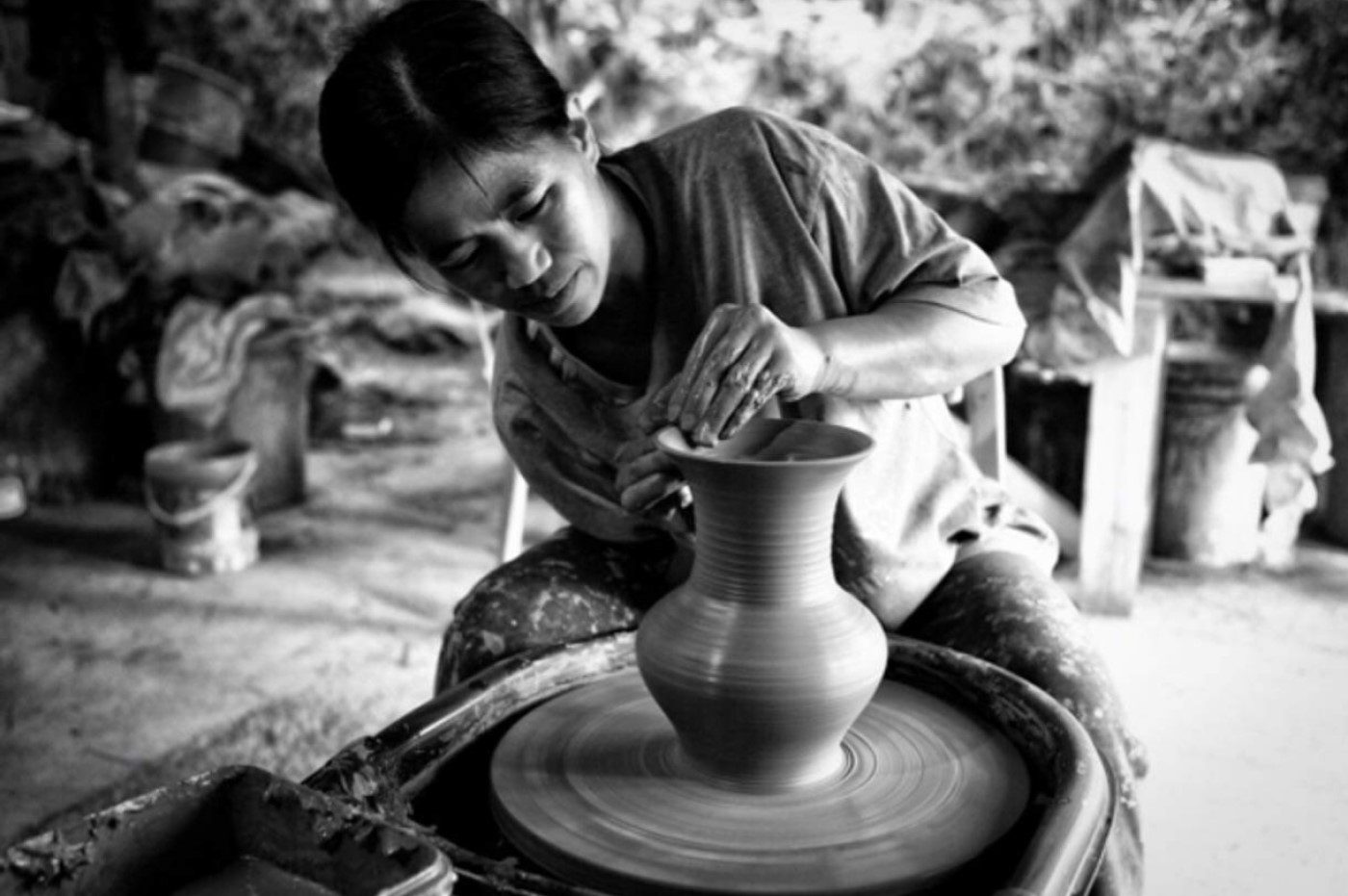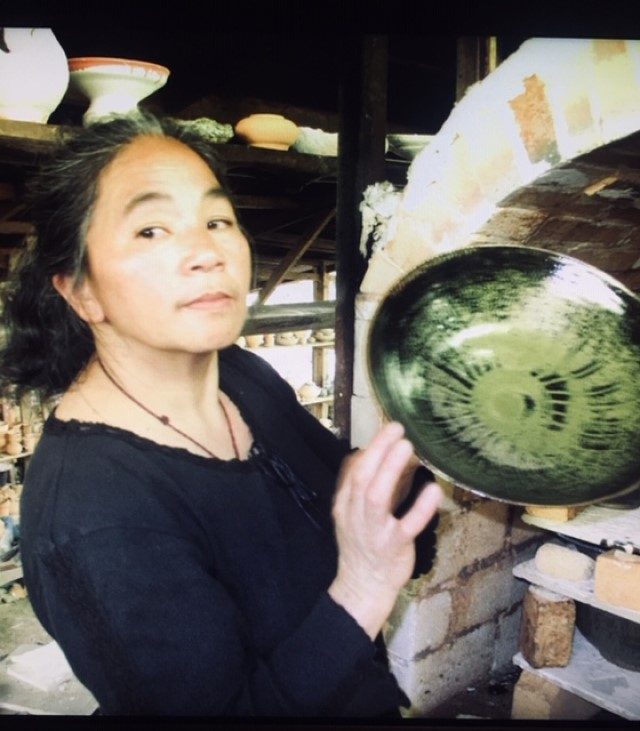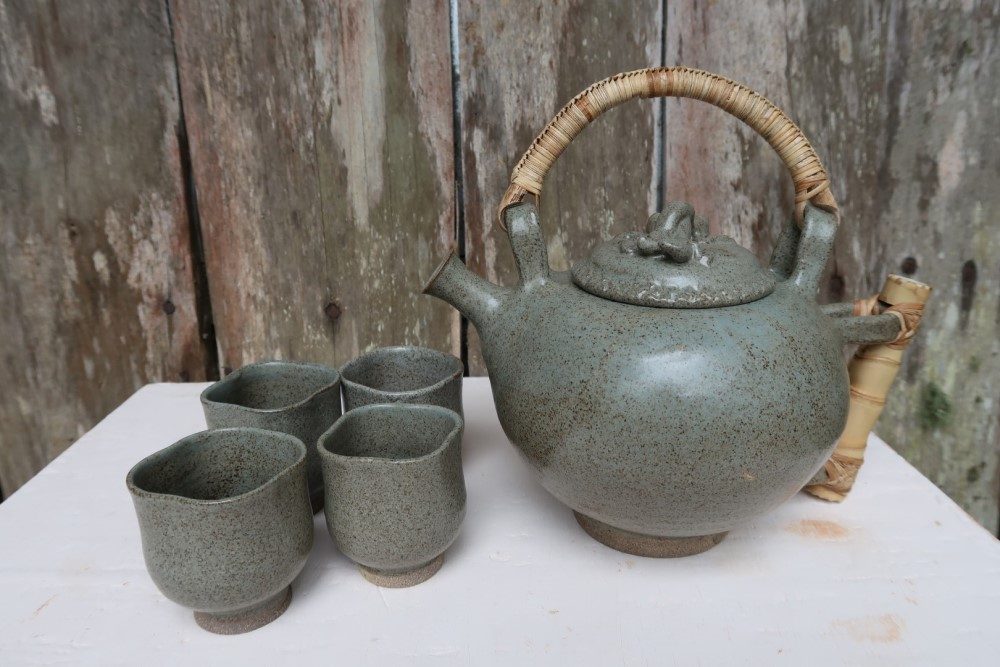SUMMARY
This is AI generated summarization, which may have errors. For context, always refer to the full article.

This is a feature from Sierra Madre Pottery Studio.
When you think of traditional Cordilleran crafts, cloth weaving, basketry, and wood carving immediately come to mind, but not pottery. In Sagada, pottery had originally been limited to Chinese jars used for food or tapuy (rice wine) passed down from one generation to another, and indigenized with simple Cordilleran basket weaving on the lids and handles.
Almost 20 years ago, a center was created to change that. All it took was the son of missionaries, a handful of townsfolk, and Sagada’s own clay.
Birth of a pottery center and a local craft
Pottery in the area started taking shape with Archie Stapleton, the son of two Episcopalian missionaries stationed in Sagada decades ago.
Stapleton came back to Sagada and sourced for machines, wheels, and other materials. He then set up the Sagada Pottery Training Center along Besao Road in 2000, teaching a small group of artisans. His training covered all the pottery-making stages – from sourcing local clay and glaze materials, processing and throwing, to glazing and kiln-firing. The center provided livelihood for Sagada locals.
If there was one such pottery community in the country, it would have to be Sagada. More than a dozen Sagada townsfolk were trained in this center and became active in pottery making for a couple of years. They have since moved on, and now have day jobs or run some stores, but they still retain their knowledge of pottery.
Sagada pottery lives on
From the dozen potters who started out in the Sagada Pottery Training Center, only two artists remain: Siegrid Bangyay and Tessie Malecdan Baldo. Together, they currently run the center, managing the tourists who visit, and pursuing their craft as well.
Bangyay, the younger potter, is a member of the Applai Kankaney indigenous group. She apprenticed under Stapleton for two and a half years and has worked for various non-governmental organizations (NGOs).

Baldo, the elder artist, tilled the soil for food, and then trained under Stapleton. She also runs a coffee shop in the town.
Both women have showcased their works in various exhibits at Ayala Museum, BenCab Museum, Pinto Art Museum, MaArte, and Art in the Park.
The two women have different pottery styles: Baldo focuses on simple, flowing shapes with geometric piercings and glaze imperfections as designs; Bangyay is more flamboyant, adding hair-like embellishments and human faces to her vessels. But one element ties them together: a raw beauty. (READ: Stoneware Pottery: The art of ceramics in Cagayan de Oro)
“Their pieces are very rustic, it’s not formally trained; it’s naïve, and innocent, but there’s a certain charm to it,” says Joey de Castro, a ceramicist and owner of the Sierra Madre Pottery Studio.

Going back to the earth
Bangyay and Baldo are partnering in an exhibit called “Sagada Earthbenders” from May 26 to June 16 at the Sierra Madre Pottery Studio gallery in Mandaluyong.
“Earthbenders” is an appropriate term, not only because they twist the clay to create forms, but because they always rely on the earth for their materials. The artists dig the clay from around the area in Sagada, just like most potters in Japan who source from their own neighborhoods. Glazing materials are also from the earth – gray from crushed rocks, light greens, wood ash, and feldspar.
This way, Bangyay and Baldo are bringing Sagada earth as art to the rest of the country, but at the same time returning to the earth to create the art. It’s like a birth and rebirth, a process that will finally draw attention to Cordilleran pottery in general. (READ: Enjoying Kurangon’s quiet charm)
“Sagada Earthbenders” will be held at the Sierra Madre Pottery Studio at the 7th floor of the NCC Building located at 586 Sierra Madre St, Mandaluyong City. It will rrun from May 26 to June 16. For more information or appointments, contact Lally de Castro at 0908-895-2958, or email lallydc@yahoo.com.
Follow Sierra Madre Pottery Studio on Facebook and on Instagram. – Rappler.com
Add a comment
How does this make you feel?
There are no comments yet. Add your comment to start the conversation.